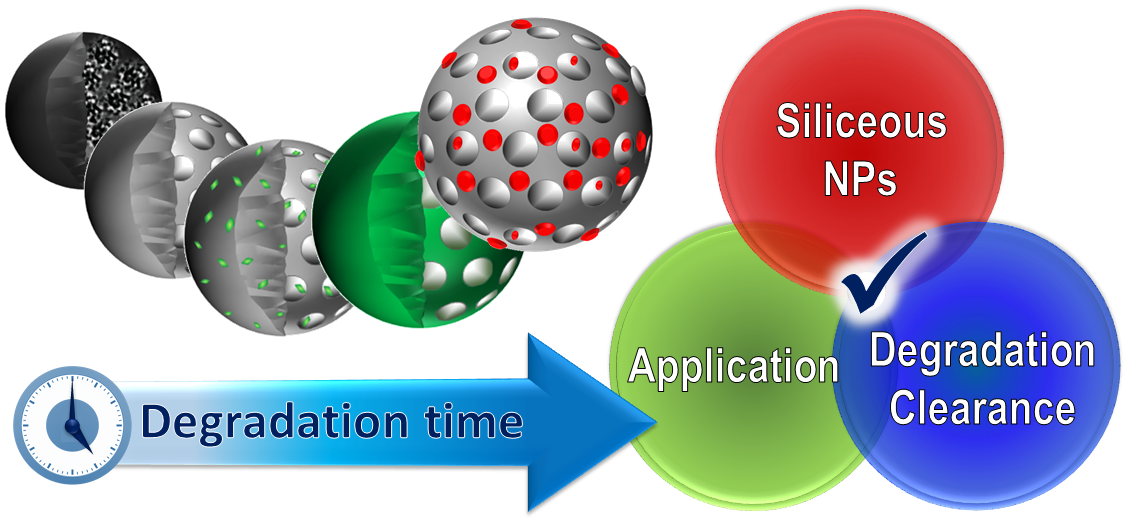

The biorelated degradability and clearance of siliceous nanomaterials have been questioned worldwide, since they are crucial prerequisites for the successful translation in clinics. Typically, the degradability and biocompatibility of mesoporous silica nanoparticles (MSNs) have been an ongoing discussion in research circles. The reason for such a concern is that approved pharmaceutical products must not accumulate in the human body, to prevent severe and unpredictable side-effects. Here, the biorelated degradability and clearance of silicon and silica nanoparticles (NPs) are comprehensively summarized. The influence of the size, morphology, surface area, pore size, and surface functional groups, to name a few, on the degradability of silicon and silica NPs is described. The noncovalent organic doping of silica and the covalent incorporation of either hydrolytically stable or redox- and enzymatically cleavable silsesquioxanes is then described for organosilica, bridged silsesquioxane (BS), and periodic mesoporous organosilica (PMO) NPs. Inorganically doped silica particles such as calcium-, iron-, manganese-, and zirconium-doped NPs, also have radically different hydrolytic stabilities. To conclude, the degradability and clearance timelines of various siliceous nanomaterials are compared and it is highlighted that researchers can select a specific nanomaterial in this large family according to the targeted applications and the required clearance kinetics.
